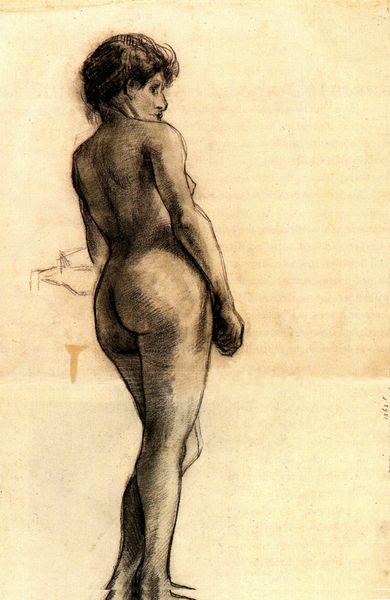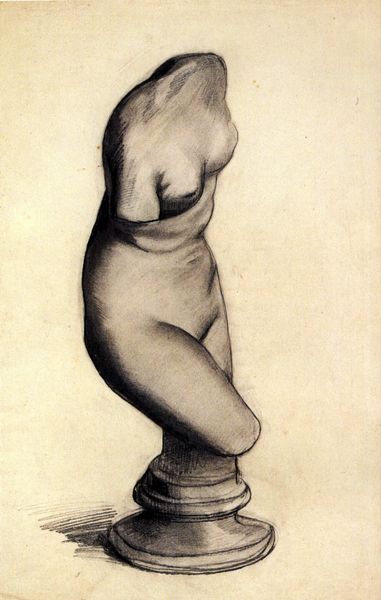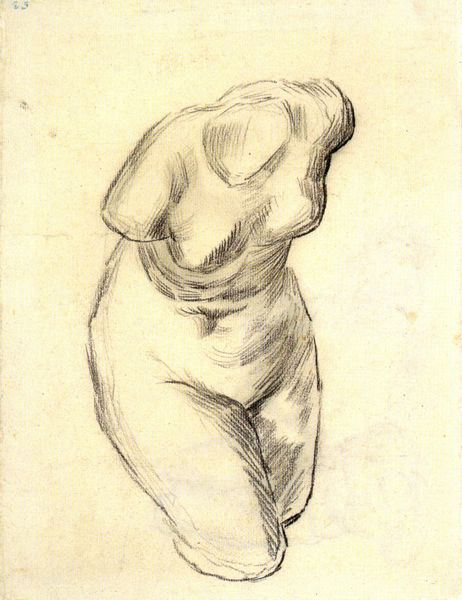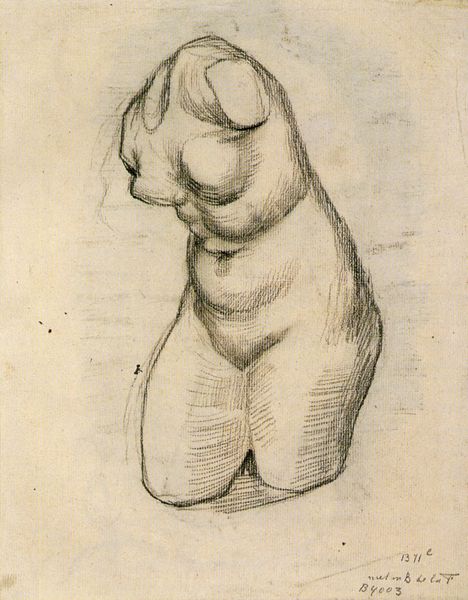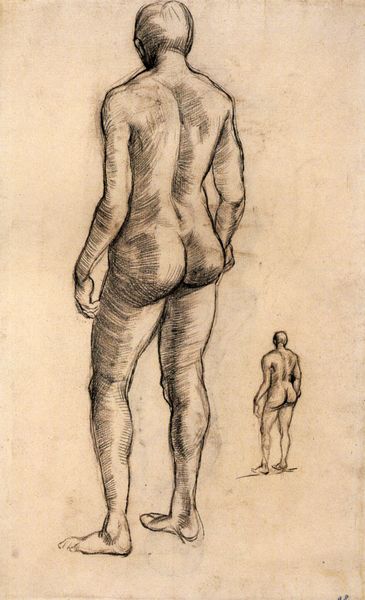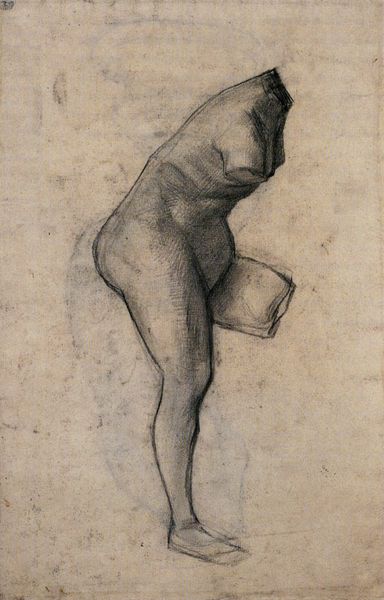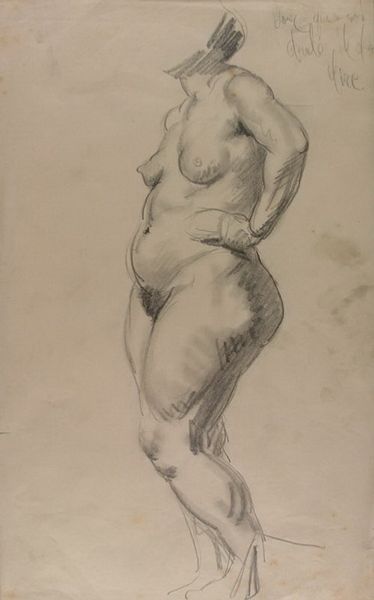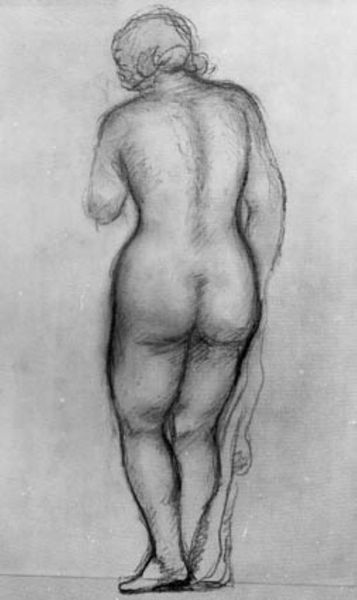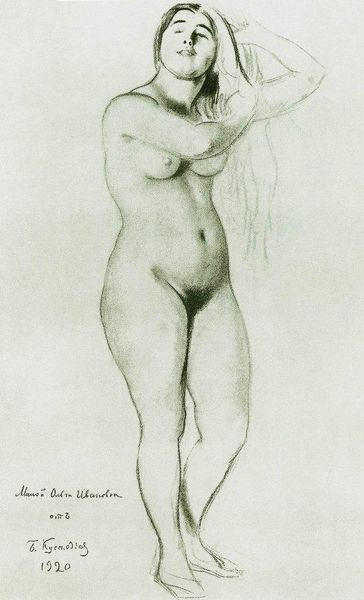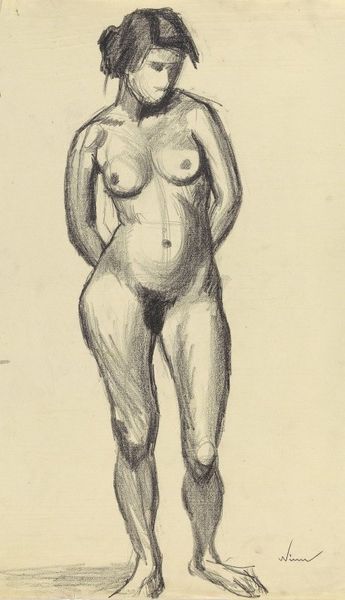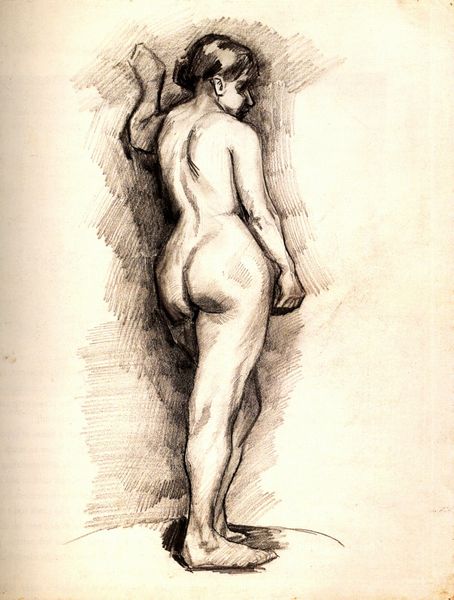
drawing, pencil
#
drawing
#
figuration
#
form
#
pencil drawing
#
pencil
#
academic-art
#
nude
#
realism
Copyright: Public domain
Curator: Here we have Van Gogh's "Torso of Venus," created in 1886. It’s a pencil drawing currently held at the Van Gogh Museum in Amsterdam. Editor: It strikes me as powerful. The shading gives the figure such depth and weight, almost sculptural despite being on paper. You can almost feel the density of the material he's depicting. Curator: It’s interesting to view this drawing in light of his academic training. It represents his engagement with classical forms but also indicates the limitations he faced and perhaps ultimately rejected. Art academies used plaster casts like this to train students in realistic form and shading. Editor: Right, so a standard pedagogical tool of the time, focusing on reproducing a specific visual reality. I see how his marks capture the smoothness of the plaster while still retaining a textural quality, thanks to the pencil work. The evident labor shows through. Curator: And there’s a social dimension too, when you consider how the art world and its institutions define what constitutes "art." Here's Van Gogh, learning the established conventions, and simultaneously struggling to find his unique expression. Editor: Exactly! You've got the industrial production of art materials like pencils allowing wider artistic exploration, combined with older teaching methods. All coming together here. He’s wrestling with tradition, isn’t he? Trying to imbue this copy with some kind of life. Curator: Precisely, and we see glimpses of the Van Gogh we know and love. While the subject matter is very traditional, the energy of the lines hint at the styles that would become iconic. Editor: Looking at the materiality helps see it, and that’s what’s great about this drawing. The work of his hand so evident, and in something we wouldn't typically expect of him. Curator: Indeed, an important glimpse into Van Gogh's artistic development within and eventually against, established norms. Editor: Definitely offers food for thought beyond just a quick aesthetic appraisal. It highlights a broader dialogue around making, meaning, and materials.
Comments
No comments
Be the first to comment and join the conversation on the ultimate creative platform.
